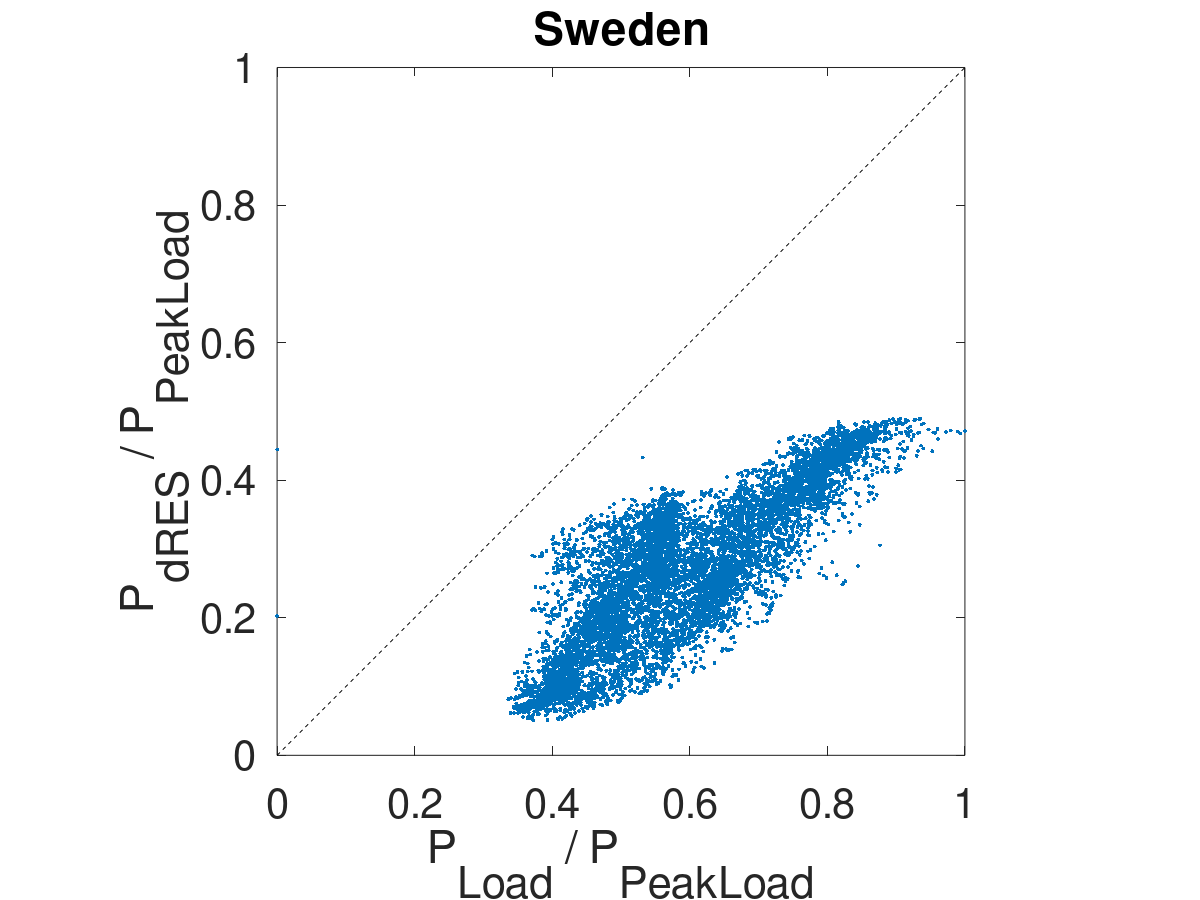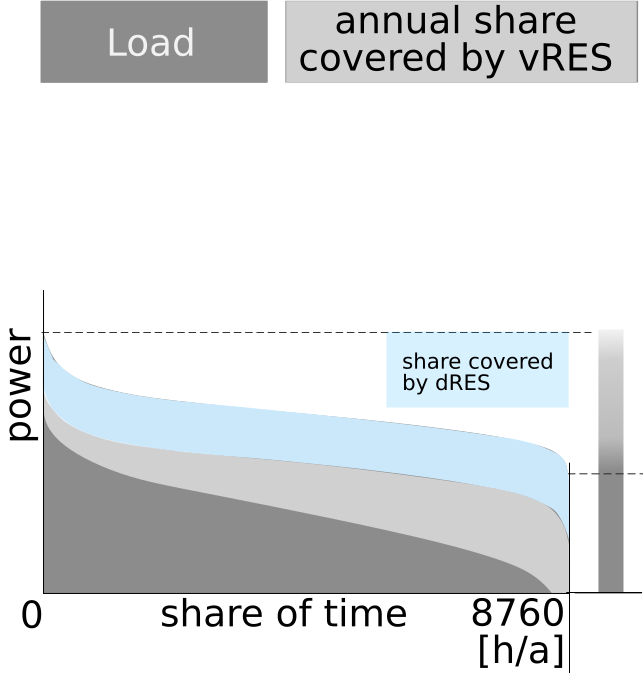Decarbonising their power sector, countries with large amounts of hydro (for example Sweden)
need to deploy less vRES than those without these resources.
The same holds for geothermal resources (Island, Kenya) or sustainably produced energy crops (biomass).
Of course, this reduces the challenges associated with vRES.
- Hydro, geothermal or biomass can be dispatched. There may be restrictions, like depleted reservoirs.
But it is perfectly possible to plan how much capacity is available the next day and
to schedule the available energy in line with the anticipated demand.
That's why these technologies are called dispatchable renewables (dRES).
- dRES plants may be located remotely. This is no difference with vRES. However, utilisation of transmission lines is higher.
- Depending on their size, large dRES capacities often are connected to the high voltage transmission networks.
Hence, they are not dispersed and their operation regularly has been coordinated by national dispatch centres.
- dRES plants typically use synchronous generators.
Hence, they are not based on power electronics and do not contribute to
System Non-Synchronous Penetration restrictions.
- dRES apparently always are operated by professional staff.
- Marginal costs of dRES are low. They are the last technologies affected by a vRES driven change of the merit order.
The capability of dRES to respond to the instantaneous load determines the maximum System Non-Synchronous Penetration (SNSP).
The schematic illustration of the load supplied by dRES and vRES indicates - whatever the instantaneous vRES output is,
a certain portion of the load can covered by dRES, i.e. synchronous generation.
Of course, with low load and high vRES output residual load tends to get negative.
In that case, one of both options, vRES or dRES, needs to be limited in order to maintain system balance.
This is just an indicator for some operational flexibility.
Availability and flexibility of dRES differs per country. Let's compare the two illustrative graphs below [1]:
In Sweden, the large hydro capacities are following the demand.
dRES dispatch is close to the diagonal line in the graph.
This indicates that, whatever the instantaneous load is, a proportional share is provided by dRES.

In contrast, in Germany, the available dRES capacity is not only much lower,
it also does not respond to actual demand.
dRES will not help to limit vRES penetration, certainly not in case of high load.

These differences
characterise the particular conditions of geographic regions
and have to be taken into account when reflecting specific challenges of particular countries.
[1] 2018 data. Data source:
ENTSO-E transparency platform.








